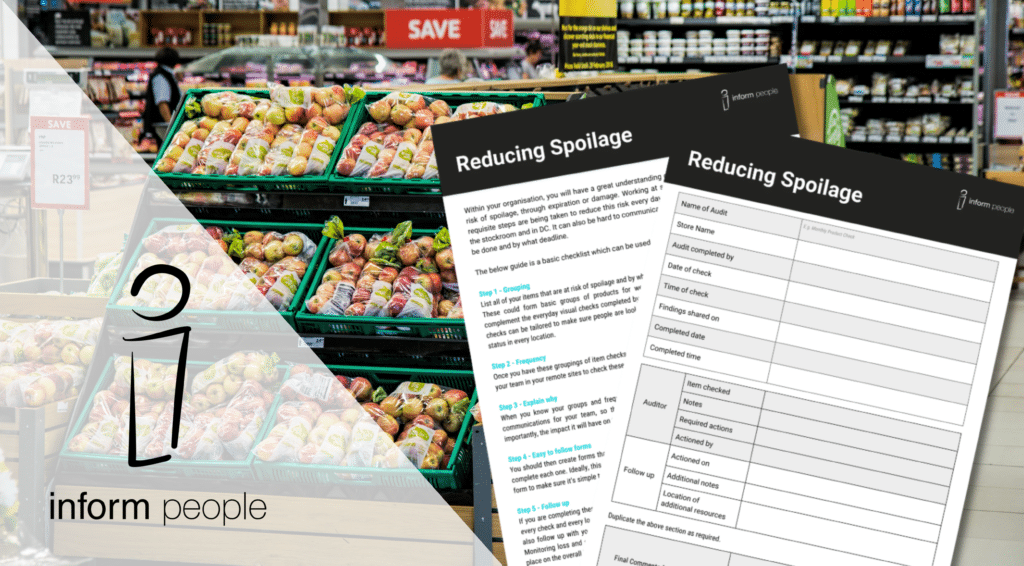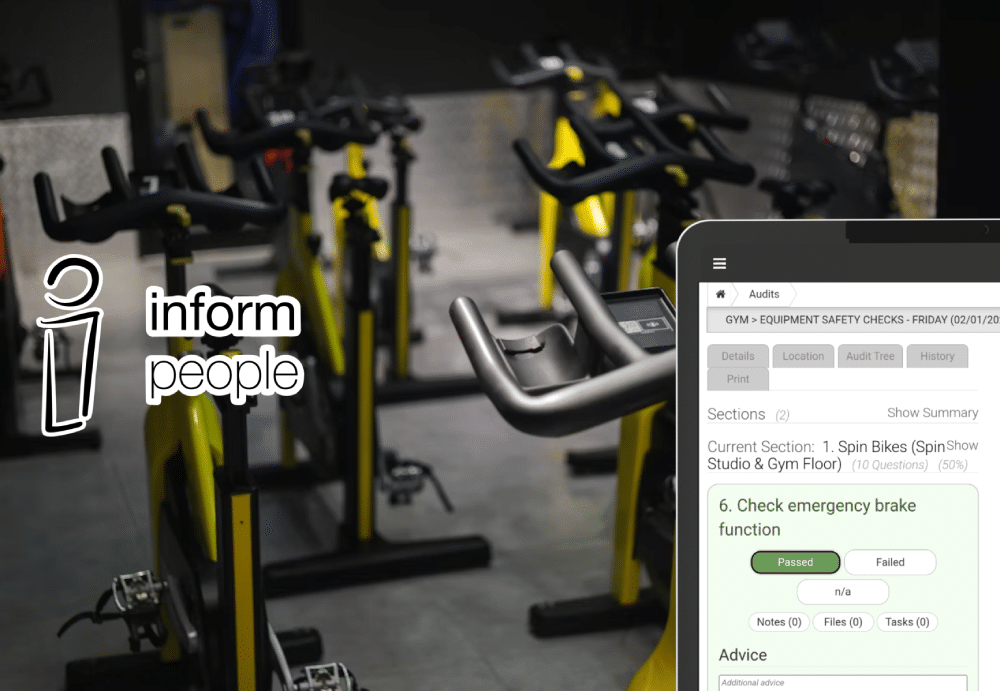Auditing tools in your pocket.
Do you know, without picking up the phone or visiting in person, if your stores are completing daily spoilage checks?
You could. It’s as easy as having a digital audit and checklist tool, with live detailed reporting, that you can check from your phone.
With all your stores using the same prompts via Inform People’s Virtual PA, you can embrace simple forms and a digital system for easy record-keeping. You can ensure that your team is consistently monitoring items at risk of spoilage. By taking action to reduce spoilage, you can protect your profits and improve your bottom line.
The issues at hand
Within your organisation, you will have a great understanding of your stock and the items that are at risk of spoilage, through expiration or damage. If your business has hundreds of locations spread throughout the UK, the scale can make monitoring a muddle. You need to know whether the requisite steps are being taken to reduce this risk, every day, by your colleagues on the retail floor, in the stockroom and in DC. You might also find it a challenge to communicate to your team if a new process needs to be introduced and by what deadline.
The below guide forms a basic checklist which we used to create our own off-the-shelf template for spoilage checks that you could implement or adapt to suit your own situations.
Step 1 – Grouping
List all of your items that are at risk of spoilage and by what method – group these into relevant dates for checks.
These could form basic groups of products for daily, weekly, monthly, quarterly, and annual formal checks to complement the everyday visual checks completed by your teams while they work. This way, your recorded audit checks can be tailored to make sure people are looking for specific things on each check time and keeping a record of the status in every location.
Step 2 – Frequency
Once you have these groupings of item checks that go together, you then need to set how frequently you will need your teams to check these.
Step 3 – Explain why
When you know your groups and frequency, you should create Standard Operating Procedures (SOP’s) and communications for your team; so they know why they are doing the checks, how to do the checks and, importantly, the impact it will have on the business by them by being done well and on time. (You can communicate these in a variety of ways: digital bulletins or policies).
Step 4 – Easy to follow forms
You should then create forms that are as simple as possible to follow. If you can also ensure that they are accessed, completed and stored in a way that can be viewed by key Health and Safety teams remotely, that would be beneficial to productivity. Ideally, this should be via an online solution so that you can schedule reminders to access and complete and that they are clear and easy to access.
Step 5 – Follow up
If you are completing these checks online, when your system is up and running, you will be generating records of every check and every location, which can be compared to see what the most regular failure points are. You should also follow up with your teams in discussions for feedback so that improvements to the process can be made.
Leading by example
Monitoring loss and spoilage with a digital system allows you to track the impact of having a system in place and the impact on the overall loss from spoilage too.
To inspire you on the path to reduced waste and spoilage we have put together a simple example form that could make up a loss check in a retail location – you can download it if you fill in the contact form below:
More about this template:
-
- The template is a simple example form that you can use as a starting point to create your spoilage checklists.
-
- It includes advice for grouping items, setting frequency for checks, creating SOPs and communications, and following up with your team.
-
- The template is designed to be easy to use and understand, with simple forms that can be completed electronically or on paper.
-
- Using the template, you can track spoilage more effectively, identify patterns and regular failure points, and improve your process.
If you find this useful, please get in touch to start digitising all your audits and checklists and remove the paper from the process completely.
This offer is completely free – click the link above to download the template and reduce spoilage today!




